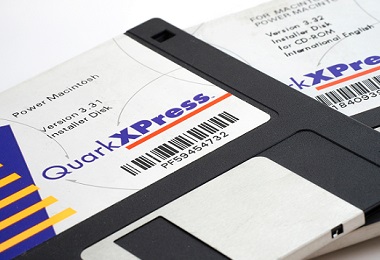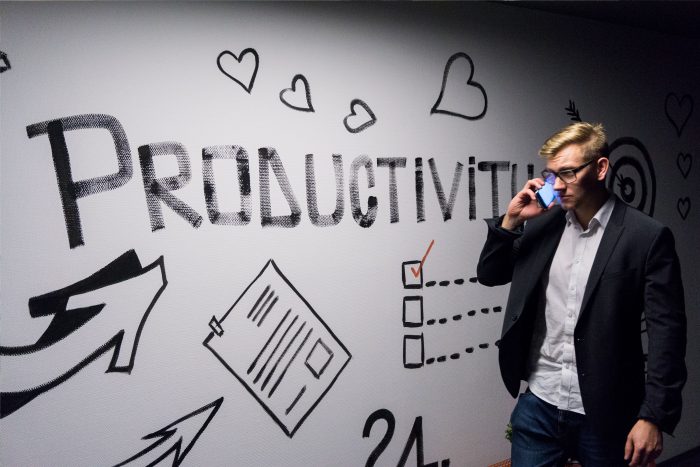Nowadays we tend to talk a lot about the increase of customer demand on businesses, the changing pace of the modern workplace and the business need to undertake digital transformation.
However repetitive this message may be, it is still incredibly important as it’s the difference between profit and loss, and your organisation surviving or disappearing.

As we all know, we live in an increasingly digital world with our own high expectations as consumers. With access to more product choice and information than ever before, as well as devices to receive these by, we don’t have the time, patience or want for poor customer experiences.
With the same kind of demand and expectation shown in the workplace, employees want to work smarter, more effectively, and be agile where possible.
Reflecting these expectations into our businesses, here’s how to achieve success when implementing your digital transformation or ERP project.
What is your business goal?
Before you even think about starting a project or contacting potential partners, you’ll need to think about what it is you want your business to achieve.
It sounds obvious, however, this process is more than just replacing legacy systems or staying on budget.
For this you will need to set solid, measurable KPIs, preferably just five of them. Having five will keep you focussed on your goals and ensure they’re both realistic and achievable.
Clear and simple to understand by all, you can do this by adopting the SMART method (Specific, Measurable, Attainable, Relevant and Timely).
What will project success look like?
Once you have your SMART goals/KPIs in place, Guus Krabbenborg of the QBS group says you should think about what project success looks like practically, stating
“What does ‘satisfied end-users’ or ‘support for change’ mean? You’re challenged to make your goal as SMART as you can. This is a kind of time travel with the leading question: ‘what makes you happy three years after the commissioning of the new system?’ You then divide that period into clear terms with an intermediate goal. Just as a runner works towards a new record time through lap times.”
So in other words, split your goals into achievable chunks that will help to keep you motivated and more likely to be satisfied – and achieve – your end result.
For instance, since moving to the Cloud, Nick Latocha, Head of Data and Insights at Travel Counsellors says,
“Now we’re in the Cloud, our focus is to improve our sales pipeline … The plan is to not only improve our candidate experience, but also increase our conversion rates.”
Although success may not always be obvious at the time, taking time to plan out what that could be is never a bad thing. After all, as the saying goes, “by failing to prepare, you are preparing to fail.”

Senior Management buy-in
As with any important change initiative, having a clear process in place, that engages all the relevant stakeholders and addresses their specific needs, will help your project gain strong buy-in from senior management.
Aligning IT and business leaders throughout the journey is essential, as this will help create an organisation open to change.
The key to changing the employee mind set, are managers who are open minded to help employees see future benefits without dwelling too much on the past. A practice what you preach situation, if you will.
Forward-thinking – what does the future look like?
Future proofing your business is essential. Holding off on an upgrade, even for the short-term, won’t do you any favours in the long run. Missing essential updates or changes in technology will ultimately become a hindrance – slowing or even stopping growth.
As an example, Microsoft research shows that “81 percent of executives believe Artificial Intelligence (AI) will be integral to their business in two years. 31 percent of enterprises say AI is on the agenda for the next 12 months, yet only 15 percent of enterprises are currently using AI.”
Therefore, although there may not currently be place for certain technologies within your business – such as AI, it doesn’t mean there won’t be. Mitigating this by becoming an early adopter will help your business see the bigger picture and put you in good stead for the future.
Project Name

A great way to engage your organisation with a new project, is to give it a good name. This shouldn’t be ‘ERP project’ for instance, as this won’t inspire or generate much excitement throughout the business as a whole.
Therefore it’s likely to be more effective combining the name of the project with your business strategy, and a goal. For example if the strategy is ‘Digital Transformation’ and the goal is £20M turnover, DTS20.
By making the name relevant to everyone, an added benefit is that the project doesn’t necessarily stop at Go Live, but will stay relevant for a much longer period of time.
Professional Kick-off
One of the best ways to communicate your project/implementation is through a kick-off.
The scale of which is of your choosing, however, right after signing the contract and on the eve of implementation, schedule a meeting with all your employees (keeping a recording for those who couldn’t be present).
New software and their processes will have a direct, as well as indirect, impact on every single employee, so it’s crucial that everyone understands what’s involved and how this will affect their role within the business.
The main topics of your kick-off could be:
- Why you’re undertaking this project
- Why all employees should be open for change
- Why processes must change, and
- What the overall business goal is
After a good kick-off, it’s not just your project anymore – it’s everybody’s project.
Customise wisely

As we’ve talked about, change happens quickly nowadays – whether that’s business or otherwise. Add in the rate at which upgrades become available in our Cloud dominated world (twice yearly with Business Central and we’re faced with constantly changing technologies).
More effective and cheaper than the traditional way of customisations, it keeps the door open for implementing future on premise upgrades without difficulty. Whereas purely Cloud SaaS implementations would not have this challenge whatsoever.
In order to keep pace with this, your business should consider changing processes in order to have less or as little, customisation as possible. Apps or extensions alleviate the need to customise a solution.
In conclusion
Digital projects and ERP implementations are no longer IT driven. Instead they’re more of an organisational change project.
Change is difficult for anyone, no matter if they’re working in big or small companies. However, to achieve project success it’s vital to understand and accept their organisational nature, as well as the importance of securing maximum boardroom engagement.
In order to be successful in today’s climate, businesses must adapt the way they market, sell, deliver, manage and support their projects.
“Building change management skills is mandatory for future success.”
QBS group
If you’d like to know more about how TVision can help with your ERP implementation, get in touch and speak to one of our experienced team today.

